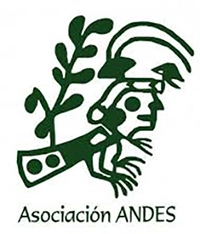2013 PERU
Hosting the Satoyama Initiative Steering Committee Meeting and Global Conference in 2015
Asociación ANDES
Partnership building
Landscape, Seascape
Project goals and objectives
Indigenous peoples’ landscapes across the world demonstrate that healthy socio- ecological production landscapes provide people with the goods and services that form the basis for sustainable development. However, global environmental change is causing significant impact on these landscapes, hindering conservation and development opportunities for future generations. The Andes high mountain environments are among the most sensitive to climate change, where the widespread retreat of glaciers is affecting the availability of freshwater to the region’s population and to key biodiversity hotspots.
In this context, Asociación ANDES seeks to explore the organisation of the IPSI Steering Committee Meeting and Global Conference in 2015 in Cusco and in the Inca Trail as a way to engage IPSI members in reflection on some of these local problems. The main purpose is to foster IPSI as a strong network with shared values, a common agenda and deep understanding of and respect for biocultural diversity. These events will serve to advance the first two objectives of the IPSI Strategy, i.e. to increase knowledge and understanding of landscapes and ecological systems, and to tackle the loss of biodiversity and its causes. ANDES will also assess the feasibility of establishing a research institute dedicated to studying how indigenous socio-ecological production landscapes can be fostered as landscapes of the future. The implementation of the centre in Cusco for the study of indigenous landscapes will serve to fulfil all of the IPSI Strategic Objectives in the long- term: conducting research and assessment, spreading knowledge, addressing the causes of biodiversity loss, and increasing benefits from maintaining socio-ecological production landscapes.
Description of project activities
In this project, research will be conducted to identify the appropriate format for hosting a 3-day “walking workshop” on the Inca Trail for an effective exchange amongst Steering Committee members of ideas and experiences, common challenges and possible solutions. The Inca Trail will be scoped to map the route and to identify key venues for synthesis, plenary and other sessions, and the format of “walking” discussions will be tested to identify methodological, logistical and other needs.
Further research will also be conducted to identify the appropriate format for a 3-day Global Forum in Cusco with IPSI members and the general public in Peru with a focus on Indigenous Peoples’ socio-ecological production landscapes and their role in global environmental change and food security. This will include a field visit to a local indigenous biocultural heritage site, the Potato Park, located in Pisaq, Cusco.
A formal cooperation will also be established with indigenous communities, local and national authorities, the IPSI Steering Committee and the IPSI Secretariat in the preparation process. National and international donor sources will be identified and contacted in order to explore avenues of funding for the proposed activities of 2015.
Finally, an exploratory study will be carried out towards the establishment of an international centre for the study of indigenous socio-ecological production landscapes.
Expected outcomes
As a result of this project, a concrete proposal to host the 2015 IPSI Steering Committee Meeting in the Inca Trail and to organise the IPSI Global Conference on Indigenous Peoples' Socio-ecological Production Landscapes in 2015 will be formulated. Guidelines for Organising Walking Workshops and a Global Conference will also be produced, and a donor database will be compiled for future reference.
The project aims to identify and consult indigenous communities and national and local authorities in order to establish a partnership with them.
The feasibility of establishing a research centre on indigenous socio-ecological production landscapes will be explored and a proposal formulated as a basis for future development.
Holding a public forum in the hotspot of environmental change is expected to promote the IPSI vision, goals and strategies amongst local practitioners and influence the culture of the general public, and ultimately, this will serve to raise the profile of the Satoyama Initiative globally.
Project location
Organisation

Asociación ANDES
- Sector
- Non-governmental organisation
- Country
- Peru
- Website/SNS
- http://www.andes.org.pe/
Relevant projects
Projects of the same year
Aichi Biodiversity Targets
Aichi Biodiversity Targets
-
Biodiversity values integrated
Sustainable Development Goals
Sustainable Development Goals
-
Sustainable cities and communities
-
Responsible consumption, production
-
Life on land
-
Partnerships for the goals